Monster of Florence
- Il Mostro redirects here. For the 2008 book, see The Monster of Florence. For the 1994 Roberto Benigni film, see The Monster (1994 film). For the 1977 Italian film, see Il mostro (1977 film). For the yacht, see 2008–09 Volvo Ocean Race.
| The Monster of Florence | |
|---|---|
| Other names | Il Mostro (The Monster), The Surgeon of Death, Il Mostro di Firenze, The Monster of Florence |
| Details | |
| Victims | 14-16 (sources differ) |
Span of crimes | August 21, 1968–September 7–8, 1985 |
| Country | Italy |
Date apprehended | Unapprehended |
The Monster of Florence (Italian: Il Mostro di Firenze) is the name commonly used by the media in Italy for a series of eight double murder cases that took place between 1968 and 1985[1] in the province of Florence. Law enforcement conducted several investigations into the cases over the course of several years. The courts reached the conclusion that the murders were not committed by a single person but by a group of at least four perpetrators who were convicted and later became known as the "Snacks companions" (Compagni di merende). The victims were young couples parked or camped in countryside areas in the vicinity of Florence during new moons. The murderers used multiple weapons, including a .22 caliber gun and knife, and in some cases excised sex organs from the bodies of the female victims, which appeared to be the motive of the crimes.
Victims
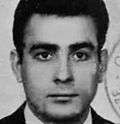
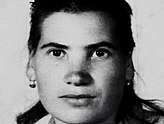
- August 21, 1968: Antonio Lo Bianco (29), mason worker, and Barbara Locci, (32) homemaker, lovers. Shot to death with a .22 Beretta in Signa, a small town to the west of Florence, while Locci's son Natalino Mele (6) lay asleep in the back seat of the car. The child woke up and, finding his mother dead, fled in fright. At 2 a.m. he arrived at a nearby house and knocked on the door, telling the landlord: "Open the door and let me in, I'm sleepy and my Daddy is sick in bed. Then you have to drive me home, because my Mommy and my uncle are dead in their car." Natalino initially said he had run away alone, then changed his story and stated that either his father or an uncle - a term he had used to describe his mother's lovers – had driven him to the house where he asked for help. Years later, Natalino said again that he was alone, but was too shocked to remember exactly what happened on that night. Locci, a native of Sardinia, was famous in the town because of her multiple love affairs, and had received the nickname Ape Regina (queen bee). Her older husband, an ingenuous man named Stefano Mele, was eventually charged with the murder and spent six years in jail. However, while he was imprisoned, more couples were murdered with the same gun. Several lovers of Locci's were suspected to be perpetrators of the crime and even Stefano stated on several occasions that one of them had killed her.

- September 15, 1974: Pasquale Gentilcore, barman (19), and Stefania Pettini, accountant (18), teenage sweethearts. Shot to death and stabbed in a country lane near Borgo San Lorenzo while having sex in Gentilcore's Fiat 127. They were not far from a notorious disco called Teen Club, where they were supposed to spend the evening with some friends. Pettini's corpse had been violated with a grapevine stalk and disfigured with 97 stab-wounds. Some hours before the murder, Pettini said something to a close friend about a weird man who terrified her. Another friend of Pettini's recalled that a strange man had followed and bothered the two of them during a driving lesson a few days before. Several couples of lovers who used to "park" in the same area where Gentilcore and Pettini were murdered stated that particular area was frequented by voyeurs, a pair of them acting very oddly.
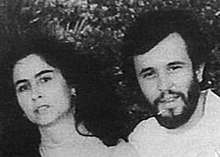
- June 6, 1981: Giovanni Foggi, warehouseman (30), and Carmela De Nuccio, shop assistant (21), engaged. Shot to death and stabbed near Scandicci, where they both lived. De Nuccio's body was pulled out of the car and the killer cut out her pubic area with a notched knife. The next morning, a young voyeur, paramedic Enzo Spalletti (30), went around speaking about the murder before the corpses had been discovered. He spent three months in jail, charged with murder, before the perpetrator exonerated him by killing again.
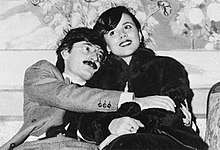
- October 23, 1981: Stefano Baldi, workman (26), and Susanna Cambi, telephonist (24), engaged and due to be married. Shot to death and stabbed in a park in the vicinity of Calenzano. Cambi's pubic area was cut out like De Nuccio's. An anonymous person phoned Cambi's mother the morning after the murder, to "talk to her about her daughter." A few days before the homicide, Susanna told her mother that there was somebody tormenting her and even chasing her by car.
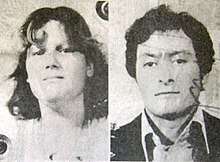
- June 19, 1982: Paolo Mainardi, mechanic (22), and Antonella Migliorini, dressmaker (20), engaged and due to be married; nicknamed Vinavil (a brand of superglue) as they were inseparable. Shot to death in Mainardi's car while parked on a country road in Montespertoli. This time the killer did not mutilate the female victim. Mainardi, though seriously injured, was still alive when found. Police and ambulances were called immediately, but Mainardi died some hours later at the hospital. A new reconstruction of the events suggests that, after shooting the couple, the killer drove Mainardi's car for a few meters to hide the vehicle and the corpses in a woodland area nearby, only to lose control of the car and abandoned it where it was finally discovered.[2]
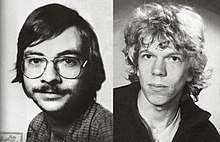
- September 9, 1983: Wilhelm Friedrich Horst Meyer (24) and Jens Uwe Rüsch (24), German, both seniors at faculty of Fine Arts in Osnabrück, traveling in Italy to celebrate an important scholarship Meyer had just won. Shot to death in their Volkswagen Samba Bus in Galluzzo. Rüsch's long blond hair and his small build could have deceived the killer into thinking he was a female. Police suspected that they were gay lovers, based on pornographic materials found at the scene.
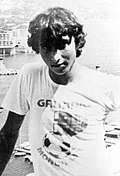
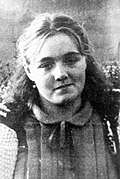
- July 29, 1984: Claudio Stefanacci, law student (21), and Pia Gilda Rontini, barmaid and cheerleader (18), sweethearts. The pair were shot to death and stabbed in Stefanacci's Fiat Panda parked in a woodland area near Vicchio. The killer removed the girl's pubic area and left breast. There were reports of a strange man who had been following them in an ice cream parlour some hours before the murder. A close friend of Rontini recalled that she had confided that she had been bothered by "an unpleasant man" while working at the bar.
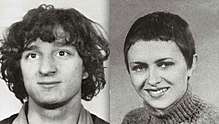
- September 7–8, 1985: Jean Michel Kraveichvili, musician (25), and Nadine Mauriot, tradeswoman (36), lovers, both from Audincourt, France, on a camping vacation in Italy. Mauriot was shot to death and stabbed while sleeping in their small tent in a woodland area near San Casciano. Kraveichvili was killed a short distance away from the tent while trying to escape. Mauriot's corpse was mutilated. Because the killer had murdered two traveling foreigners, there was not yet a missing persons report. The killer sent a taunting note, along with a piece of Mauriot's breast, to the state prosecutor, Silvia Della Monica, stating that a murder had taken place and challenging local authorities to find the victims. A person picking mushrooms in the area discovered the bodies a few hours before the letter arrived on Monica's desk.
Suspects and reaction
Four local men - Stefano Mele (husband of victim Barbara Locci), Pietro Pacciani, Mario Vanni, and Giancarlo Lotti - were arrested, charged and convicted of the crimes. Critics suggest that the real killer or killers have never been identified. Several other suspects were arrested at various times, but were later released when subsequent murders using the same weapon and methods occurred during their detention.
Pacciani, a farmer known to be a "peeping Tom" - who, along with his friends Lotti, Vanni and Pucci, became known as the "Picnic Companions" (Compagni di Merende) in court testimony - was suspected of the crimes due to the similarities between the Monster's victims and a 1951 murder committed by Pacciani against a man who had relations with his ex-girlfriend, for which Pacciani served thirteen years in prison. He was later sentenced for rape and domestic abuse of his wife. Pacciani was convicted for the Monster's crimes and condemned to life imprisonment, but the verdict was later overturned and annulled. Pacciani died before the new trial. Vanni and Lotti were instead convicted and condemned to life imprisonment.
In 2001, Michele Giuttari, chief inspector for the police unit GIDES (Gruppo Investigativo Delitti Seriali, Investigative Group for Serial Crimes) announced that the crimes were connected to a satanic cult allegedly active in the Florence area. This conclusion was based, in part, on the discovery of a pyramidal stone near a villa where Pacciani had been employed. The stone, Giuttari suggested, was indicative of cult activity. Critics, such as journalist Mario Spezi, found this idea laughable, given that such stones are commonly used as doorstops in the surrounding area.[3] Giuttari and Giuliano Mignini speculated that a pharmacist, Francesco Calamandrei, was involved; however, Calamandrei was later exonerated. These allegations against Calamandrei and a physician from Perugia, Francesco Narducci, have never been proven.
Giampiero Vigilanti, another suspect, knew Pacciani in 1951 when the latter killed a man while he was having sex with his girlfriend. Shortly after, he went to France and joined the French Foreign Legion. Vigilanti would have been heard by Canessa several times and led to places where killers were killed. He had been marginalized by the investigations of the 1980s and 1990s. Another tack was taken by the mass media after an attorney-at-law Vieri Adriani, was related to Nadine Mauriot, one of the monster victims. In interrogation, the man named the former medical practitioner, Francesco Caccamo, who was investigated as a possible accomplice.
DNA was found that could not be traced back to the victims. A bloody handkerchief found at the time (a few days after the crime of the Scopeti) in a bush along with surgical gloves. Professor Riccardo Cagliesi of the Institute of Legal Medicine of Florence compiled a 13-page report on November 7, 1985 indicating that the material was human group B blood (compatible with the blood of Mario Vanni, but not that of Pacciani) and the hair fragments like the hair found on the bodies of Susanna Cambi and Stefano Baldi. The evidence was then forgotten. At the end of July 2017 prosecutors conducted an examination of the DNA which was then linked to the suspects. DNA was also taken from envelopes sent to the magistrates by the killer.
Italian magazine Tempi published an article, on 19 May 2018, where it is suggested that Zodiac and the Monster of Florence are the same person: Giuseppe 'Joe' Bevilacqua, an Italian-American.
Books, film and television
- The Monster of Florence, a 1983 non-fiction book by Mario Spezi, was the basis for a 1986 Italian film of the same name written and directed by Cesare Ferrario, and co-written by Fulvio Ricciardi.
- L'assassino è ancora tra noi ("The murderer is still free among us"), an Italian giallo loosely based on the case, was filmed soon after one of the murders and also released in 1986. It was written and directed by Camillo Teti, and co-written by Giuliano Carnimeo and Ernesto Gastaldi.[4][5][6]
- The 1996 book The Monster Of Florence by Magdalen Nabb doubted Pacciani as Il Mostro and was based on actual and extensive case documents. Although the book is a work of fiction, Nabb states that the investigation in the novel was real and the presentation as fiction was a protective measure.
- The 1999 novel Hannibal, the 2001 film adaptation, and the television adaption have all used the Il Mostro case as the basis for a sub-plot of the scenes set in Florence. In the novel, supporting antagonist Inspector Rinaldo Pazzi was professionally disgraced when he arrested the wrong man for the Il Mostro murders. In the film, Il Mostro is a janitor at the Palazzo Vecchio; the killer witnesses Hannibal Lecter (Anthony Hopkins) murdering Chief Inspector Rinaldo Pazzi (Giancarlo Giannini) before fleeing the city. All sequences relating to Il Mostro were dropped from the film before its release, but were available for viewing on the DVD release.[7]
- The 2008 book The Monster of Florence: A True Story by Douglas Preston and Mario Spezi casts doubts on the culpability of Pacciani as Il Mostro. Writer/producer Christopher McQuarrie purchased the screen rights to the book.
- In 2009, a six-part television film, Il mostro di Firenze, was produced and broadcast by Fox Crime.
- The 2011 e-book The True Stories of the Monster Of Florence by Jacopo Pezzan and Giacomo Brunoro (April 2011) gives a detailed account of all the murders and the different investigative theories.
- In the third season of Hannibal, Hannibal Lecter (Mads Mikkelsen) is implied to have been Il Mostro.
- In 2012, book "Delitto degli Scopetti - Giustizia mancata"[8] written by Vieri Adriani[9] (lawyer), Francesco Cappeletti and Salvatore Maugeri reanalyze the ascertaining facts about the crimes committed by the serial killer named the Monster of Florence. The book offers an extensive and a very well-researched information about the investigative errors and procedure gaps that led to missing justice. The detailed reconstruction and the presentation of the current modus procedendi of Justice in Italy bring the readers closer to the truth.
- In the TV series Criminal Minds: Beyond Borders Season 2 Episode 2, "Il Mostro", the killer is identified as a surgeon (played by Paul Sorvino) who left Florence after having been a suspect, to continue his spree elsewhere in Europe and Asia; he returns to Florence as he is terminally ill, and then manipulates his son (played by Luca Malacrino), from an incestuous relationship with his sister, into becoming a copycat killer for him.
References
- ↑ Lohr, David. "The Monster of Florence". Crime Library. p. 10. Archived from the original on 2014-04-03.
- ↑ Pezzan, Jacopo; Brunoro, Giacomo (2011). The True Stories Of The Monster Of Florence. LA CASE ISBN 978-88-905896-9-0
- ↑ Preston, Douglas (2006). The Monster of Florence: A True Crime Story, The Atlantic, July/August 2006 issue; URL accessed May 1, 2017
- ↑ Capolino, Gabriele (5 January 2011). "George Clooney sarà il protagonista de Il mostro di Firenze". cineblog.it (in Italian). Cineblog. Retrieved 15 January 2017.
- ↑ Gasparroni, Marta (28 April 2014). "Il mostro di Firenze diventa un film con George Clooney produttore". cinema.excite.it (in Italian). Excite. Retrieved 15 January 2017.
- ↑ Facchin, Andrea (28 April 2014). "The Monster of Florence, il regista Christopher McQuarrie a Firenze per alcuni sopralluoghi". bestmovie.it (in Italian). Best Movie. Retrieved 15 January 2017.
- ↑ "Hannibal". 9 February 2001 – via IMDb.
- ↑ "Il delitto degli Scopeti" (in Italian).
- ↑ https://www.linkedin.com/in/vieri-adriani-2b762084
External links
| Wikimedia Commons has media related to Monster of Florence. |
- The Monster of Florence - a detailed and accurate account of all the facts and theories behind the case
- "The Monster of Florence", TIME
- A shorter account on Douglas Preston's narrative can be found online: "The Monster of Florence", The Atlantic
- A Map of the murders can be found online
- 2004 interview with the author Magdalen Nabb detailing her research on the case and Mario Spezi